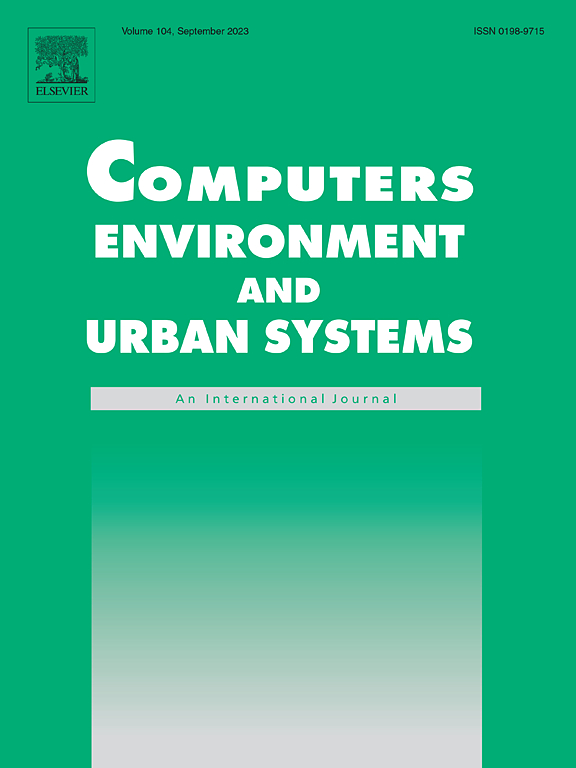Shortest covering paths and other covering walks: Refinements and prospects for subtour prevention
IF 8.3
1区 地球科学
Q1 ENVIRONMENTAL STUDIES
Computers Environment and Urban Systems
Pub Date : 2025-02-13
DOI:10.1016/j.compenvurbsys.2024.102247
引用次数: 0
Abstract
The shortest covering path problem (SCPP) is a network optimization model in which a least-cost route connecting an origin and destination that can be accessed by all demand nodes in a network is sought. Thus, it is applicable to transportation planning tasks such as designing routes for public transit and distribution systems. However, deriving optimal solutions to the SCPP can be challenging as an iterative solution approach is often required. Also, problems can arise in accounting for coverage of network nodes and in the handling of certain types of cycles. To this end, a family of model variants for the SCPP is proposed to remedy these problems and to assist with the identification of covering paths and other walks. Additionally, the case in which the origin node is also the destination node is incorporated into the SCPP framework. A flow-constrained SCPP that does not require an iterative solution process is then proposed to identify optimal walks of different types. The flow-constrained SCPP and its iterative counterpart are solved for all origin-destination pairs in a network and their relative computational characteristics are assessed. The results demonstrate that optimal solutions to the flow-constrained SCPP can be obtained more quickly than those obtained using the iterative approach. The results also provide further evidence of the relevance of cycles, particularly those involving U-turns, in solutions to network routing problems. Together, the proposed refinements, extensions, and documented computational experience will extend the applicability and the utility of the SCPP and its counterpart path covering models.
最短覆盖路径与其他覆盖路径:改进与展望
最短覆盖路径问题(SCPP)是一种网络优化模型,其目的是寻找连接起点和终点且网络中所有需求节点都能访问的代价最小的路径。因此,它适用于公共交通和分配系统的路线设计等交通规划任务。然而,获得SCPP的最优解决方案可能具有挑战性,因为通常需要迭代解决方法。此外,在计算网络节点的覆盖范围和处理某些类型的周期时可能会出现问题。为此,提出了SCPP的一系列模型变体来解决这些问题,并协助识别覆盖路径和其他路径。此外,源节点同时也是目标节点的情况被合并到SCPP框架中。然后,提出了一种不需要迭代求解过程的流约束SCPP来识别不同类型的最优行走。对网络中所有出发地对进行了流约束SCPP及其迭代求解,并评估了它们的相对计算特性。结果表明,与迭代法相比,该方法能更快地得到流约束SCPP的最优解。研究结果还进一步证明了周期的相关性,特别是那些涉及u型转弯的周期,在网络路由问题的解决方案中。总之,提出的改进、扩展和记录的计算经验将扩展SCPP及其对应路径覆盖模型的适用性和实用性。
本文章由计算机程序翻译,如有差异,请以英文原文为准。
求助全文
约1分钟内获得全文
求助全文
来源期刊

Computers Environment and Urban Systems
Multiple-
CiteScore
13.30
自引率
7.40%
发文量
111
审稿时长
32 days
期刊介绍:
Computers, Environment and Urban Systemsis an interdisciplinary journal publishing cutting-edge and innovative computer-based research on environmental and urban systems, that privileges the geospatial perspective. The journal welcomes original high quality scholarship of a theoretical, applied or technological nature, and provides a stimulating presentation of perspectives, research developments, overviews of important new technologies and uses of major computational, information-based, and visualization innovations. Applied and theoretical contributions demonstrate the scope of computer-based analysis fostering a better understanding of environmental and urban systems, their spatial scope and their dynamics.
 求助内容:
求助内容: 应助结果提醒方式:
应助结果提醒方式:


